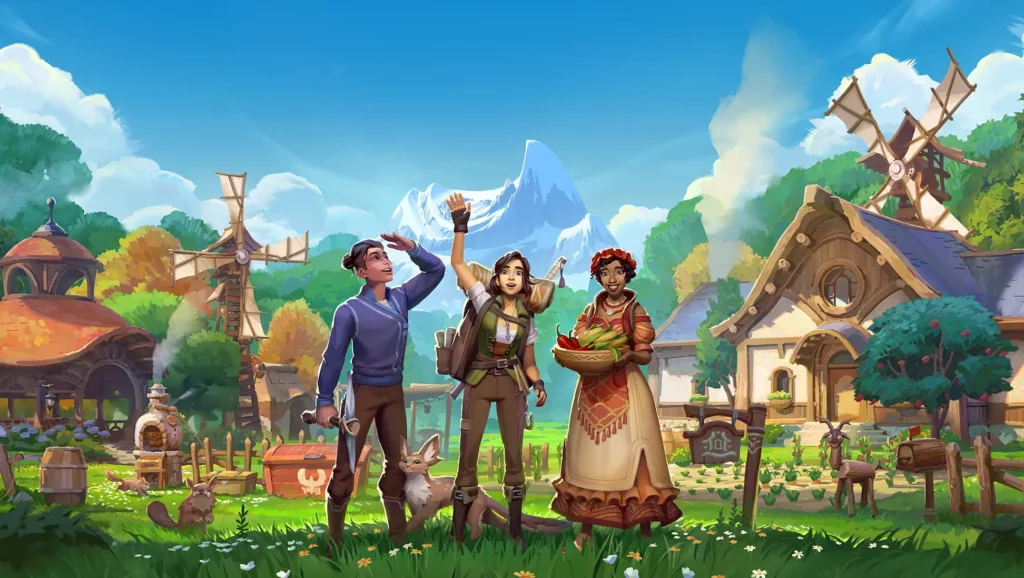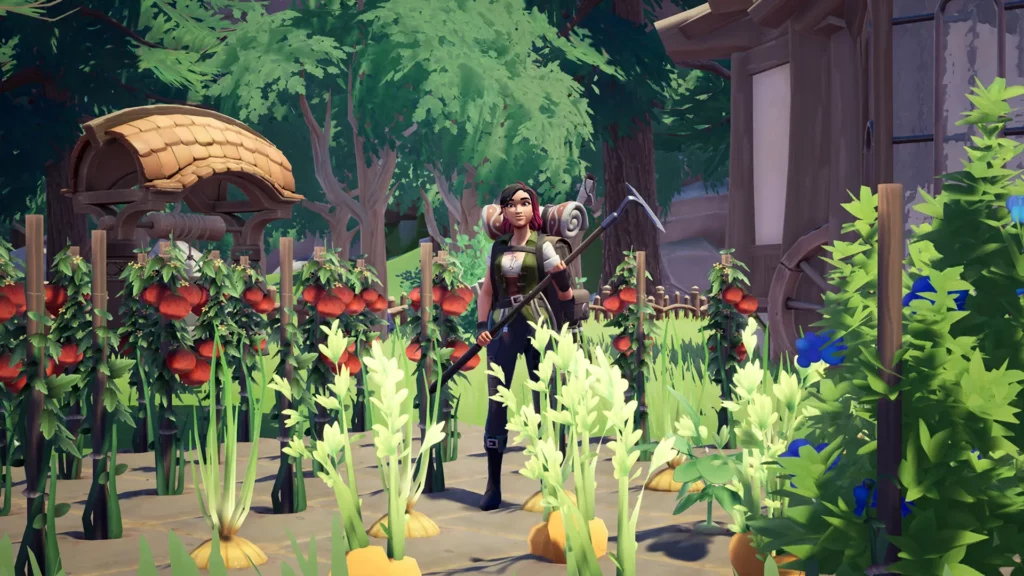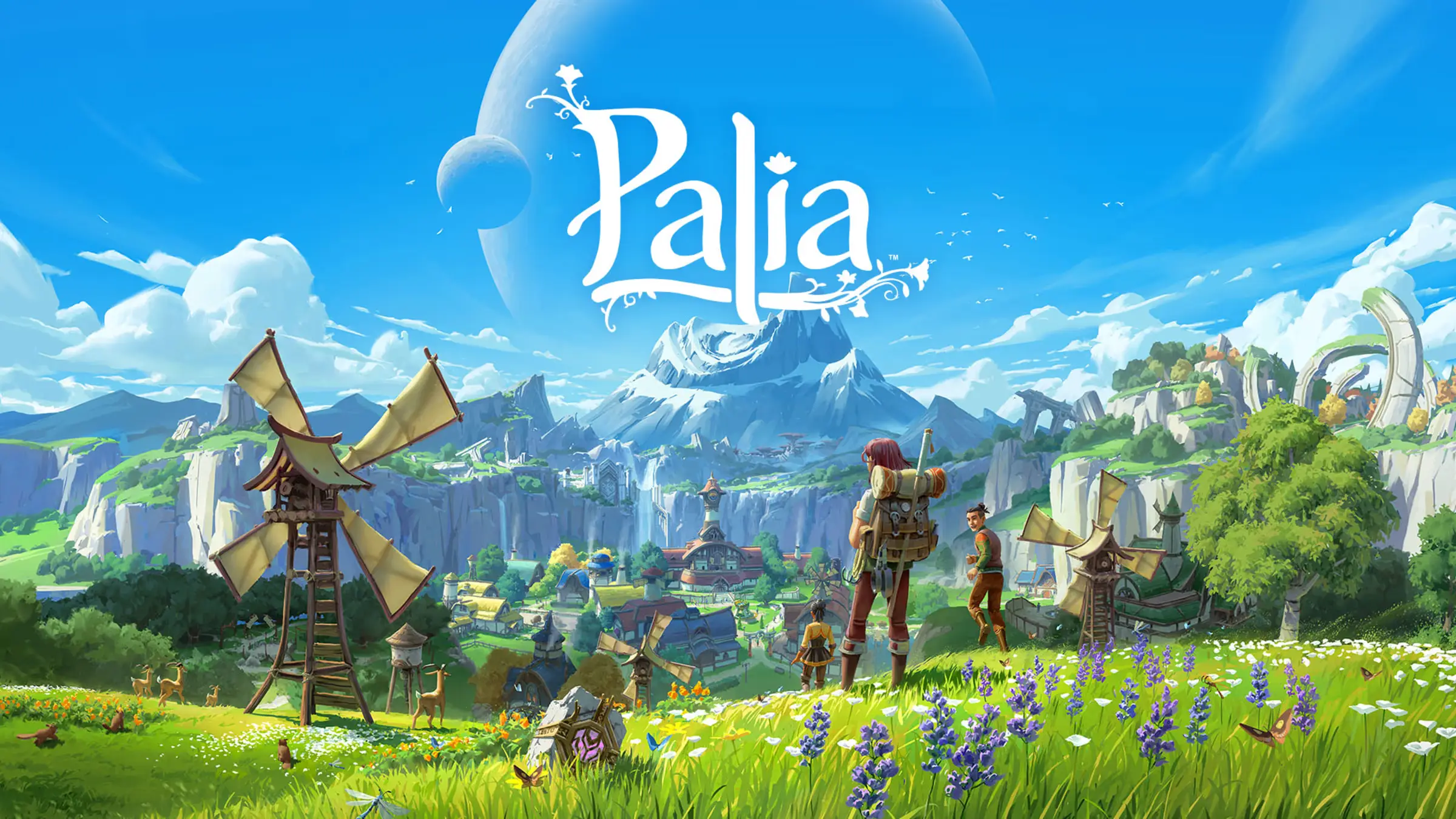Games that invite players to build peaceful lives in charming towns have long been a source of comfort. Titles like Stardew Valley, Disney Dreamlight Valley, and Animal Crossing have popularized this relaxing formula. Palia brings something new to the table by integrating large-scale multiplayer functionality into the same comforting gameplay structure. After over 70 hours spent immersed in tree cutting, creature hunting, home decorating, and bonding with other inhabitants of the game world, it’s clear that Palia has a firm grasp on what makes the cozy game genre work—while pushing it into fresh territory.
Vibrant biomes full of intriguing places to visit, an assortment of items and relics to gather or construct, and engaging questlines to follow make this title easy to fall into. The recent Elderwood expansion, which arrived with the console version, enhances an already rich experience by adding additional content and regions. While the game shines in many aspects, some story elements feel underdeveloped, and bugs and technical hiccups occasionally break immersion. Nevertheless, the game’s ability to deliver shared moments of calm, such as group fishing at dusk, makes up for many of its technical stumbles.
Community-Driven Gameplay in an Online Setting
At its heart, Palia is a comforting life simulation that distinguishes itself with a notable twist: it’s set in a persistent online world. This change encourages—and occasionally demands—interaction with other players, nudging even the shyest of gamers toward shared experiences. Throughout your journey, you’ll run into others casually gathering resources or completing their own objectives in this connected universe.
Incentives for cooperation are cleverly built into gameplay. You receive bonuses for fishing as a group, and there are enchanted trees that only yield to group harvesting efforts. This approach has nurtured a surprisingly friendly player base. Most public chat activity consists of helpful notifications from players who’ve found a rare item or event, waiting patiently for others to arrive before collectively harvesting it. Having spent time in many online games with communities known more for competitiveness and hostility than goodwill, the overwhelming positivity of Palia’s world is both unexpected and heartening.
Solo Play Remains a Valid Path
Despite being a multiplayer-centric game, Palia offers an array of enjoyable activities that can be tackled alone. Whether it’s cooking, bug catching, gardening, or hunting, every mechanic supports personal progress and relaxation. The fishing minigame stands out by offering more interactivity than typical genre fare, requiring players to respond to leaping fish with tugging and maneuvering rather than passive waiting.
Uncommon pursuits like hunting bring additional depth, involving critters that dart into holes or leap into trees while players track them with arrows. Yet, in its aim to maintain low stress, Palia occasionally oversimplifies mechanics. Arrows, for instance, auto-correct mid-air, even curving unnaturally around obstacles to hit targets. While designed to minimize frustration, these overly helpful mechanics sometimes create annoyance, particularly when precision is preferred and unintended targets are hit instead.
A World with Lore and Lighthearted Adventure
Palia also ventures into narrative territory with an unexpectedly rich main storyline. Players uncover clues about a vanished human civilization and explore the legacy of dangerous magic that may have contributed to their disappearance. While the subject matter sounds heavy, the presentation is gentle and approachable. Most quests involve uncovering small pieces of history or spending time with companions while navigating platforming challenges or simple puzzles.
These story missions are clearly designed with accessibility in mind and can be finished in just a few hours if pursued directly. Even so, they offer a pleasant contrast to repetitive crafting tasks. Unfortunately, the storyline feels incomplete. Though the Elderwood expansion replaces the original cliffhanger ending, it merely leads to another one shortly after. Despite the arrival of a new dungeon and additional errands, the central narrative still lacks closure—an odd omission given the expansion’s broader additions.
Light Diversions and Unexpected Challenges
Alongside the main activities, Palia includes a number of optional distractions that provide welcome breaks from routine. One such diversion is a card game centered on hotpot cooking, while another is a platforming challenge that can take hours to master. These interludes offer variety, though their execution varies. Platforming, for example, suffers from imprecise controls, with players frequently falling due to inconsistent climbing mechanics.
While such stumbles may be frustrating, the penalties are minimal, rarely costing more than a little time. Other mini-games, like a sliding puzzle mechanic, strike a more satisfying balance between simplicity and engagement. These creative touches reflect the developers’ willingness to experiment, and even when a feature doesn’t land perfectly, it adds texture to the overall experience.

Emphasis on Home Design and Decoration
A major component of Palia’s appeal is home construction and interior design. Unlike some games that restrict customization or burden players with complex building tools, Palia employs a modular system that strikes an ideal middle ground. Players unlock blueprints for house segments, which can be easily snapped together to create tailored layouts. This balance of control and simplicity makes it both accessible and rewarding.
Decorating interiors offers another layer of freedom, allowing precise placement of furnishings, decorations, and even small personal items. This process could easily consume dozens of hours alone, as players refine their homes to perfection. The drive to gather resources for expanding or enhancing one’s house becomes a powerful motivator, sending players back into the world to hunt for building materials again and again.
Skill Progression Through Everyday Tasks
Each activity in Palia feeds into a progression system. Gathering wood, mining ore, planting trees, and crafting items all contribute to leveling up. As players improve their skills, they unlock tools and workstations such as looms for fabric or furnaces for smelting. Tool upgrades arrive right when needed, making the pace of advancement feel organic and rewarding.
The game generally avoids restrictive timers or other barriers to fast-paced play. Unlike some life sims that slow progress with artificial delays, Palia lets players move through content as quickly—or leisurely—as they like. This freedom makes it easier to remain immersed, as the only real limitations are time and the player’s own priorities.
Developing Bonds With the Villagers
Another central element of Palia is relationship building. The game features 26 non-player characters (NPCs), each with unique personalities and story arcs. Friendships evolve through repeated interactions, with each character gradually revealing more about their background and interests. One standout is Kenyatta, the mayor’s sarcastic daughter, whose story grows increasingly nuanced as players assist her in finding her path.
Even characters that initially come across as grating, like the conspiracy-minded Elouisa, develop a certain charm over time. The game also supports romantic relationships, with players able to date one—or several—NPCs. However, this area of the game introduces one of the few frustrating limitations: timegating.

Only one conversation per in-game day (equal to 30 minutes in real time) is allowed with each character, and only one gift can be given daily in real-world time. This slows progress significantly, especially early in the game when players need a character’s recommendation to gain citizenship. The pacing here contrasts with the rest of Palia’s systems, which are mostly free of restrictions.
Elderwood Expansion Brings Fresh Life
The Elderwood expansion represents a major step forward for Palia, both in terms of scale and variety. It introduces a vibrant new region with distinct areas and strange new wildlife, such as frog-like monsters that spit slime. Fresh resources like platinum and palium are now available, making the grind more rewarding for veteran players.
Helpful additions include relics that simplify material tracking and new tools for crafting. Players also meet Ulfe, a new character with a markedly different energy compared to the existing cast. Her interactions stand out thanks to amusing communication mix-ups. While Elderwood doesn’t transform the game dramatically, it enriches what’s already there and feels like a much-needed content boost.
What Still Needs Work
While the new content is welcome, several aspects of the game still feel incomplete. Even with three map zones available, the explorable areas remain limited, and most players will have seen the majority of what’s offered within a few hours. The online features, while innovative, lack depth. More co-op-specific activities would help capitalize on Palia’s multiplayer structure.
There’s also a noticeable absence of interactivity within player homes. Decorations can be placed and admired, but they cannot be used. Beds can’t be laid in, sinks don’t turn on, and overall, houses feel more like museums than living spaces. Though some small features—like functioning light switches—have been added, the world still feels less interactive than it should.

Performance Problems and Technical Glitches
Bugs and technical issues remain a persistent problem in Palia. NPCs occasionally sink through the terrain, vanishing entirely from view and becoming unreachable. Visual elements pop into existence unexpectedly, and load times between regions feel longer than necessary. These issues detract from the overall experience, especially when they interfere with quest progression or interactions.
The situation is particularly dire on the Nintendo Switch, where graphics are significantly downgraded and performance suffers. While the game is enjoyable on other platforms, the Switch version cannot be recommended in its current state due to these shortcomings.
Final Verdict: A Promising Yet Unfinished Journey
Palia stands as an ambitious attempt to merge the serenity of life sims with the connectivity of an MMO. Its strengths lie in its welcoming community, satisfying building mechanics, diverse activities, and appealing NPCs. Even after extended playtime, many players find themselves returning to complete just one more task or join friends for a peaceful evening activity.
However, several areas—story progression, online gameplay depth, and overall polish—still need attention. The Elderwood expansion is a step in the right direction, but key elements remain either missing or underdeveloped. That said, Palia’s foundation is strong, and if its creators continue to build upon it, the game could become a landmark title in its genre. For now, it remains a captivating virtual escape that delivers exactly what it promises: a gentle, welcoming world you’ll want to return to again and again.
